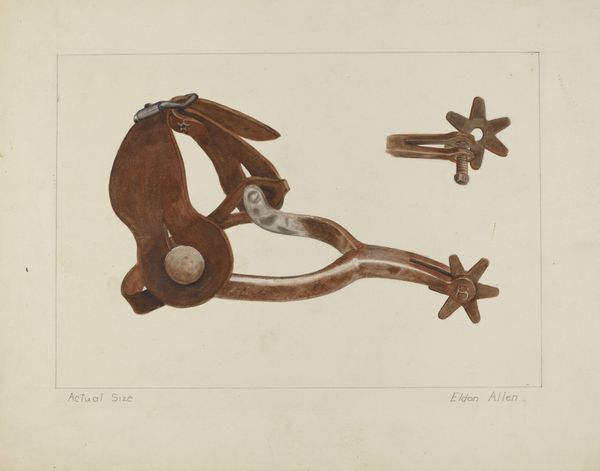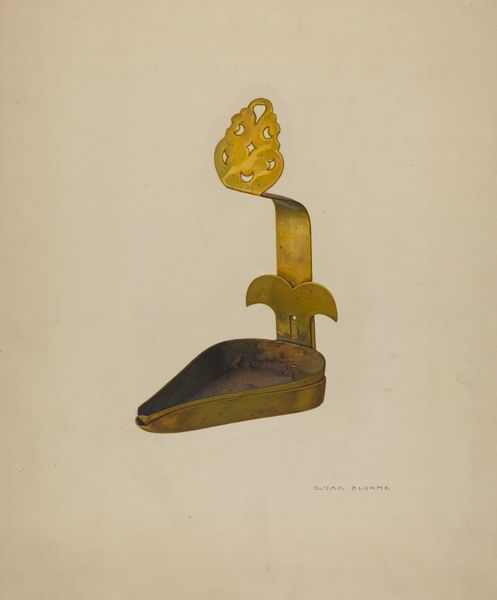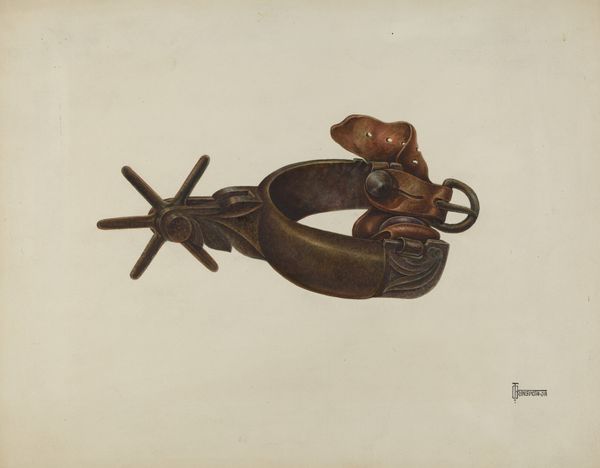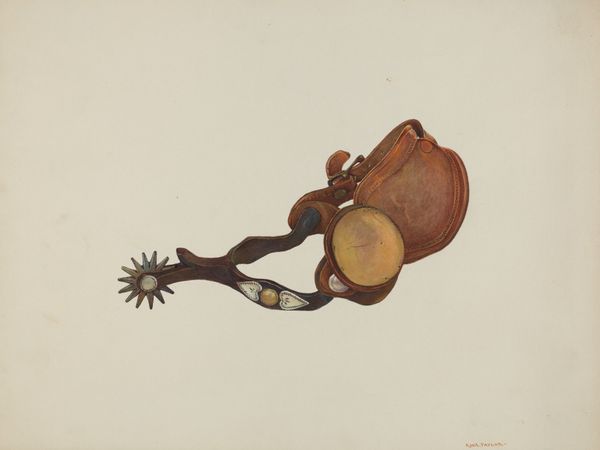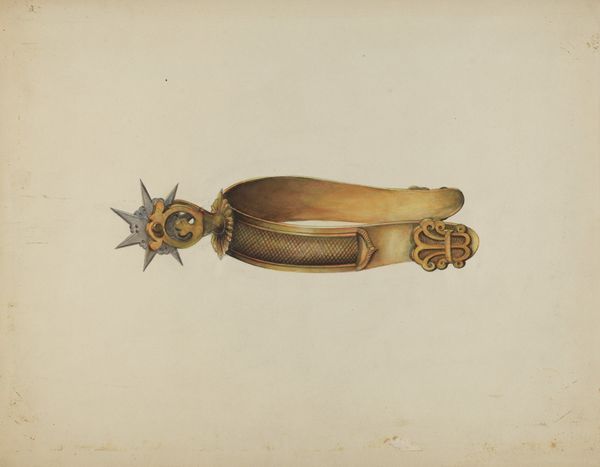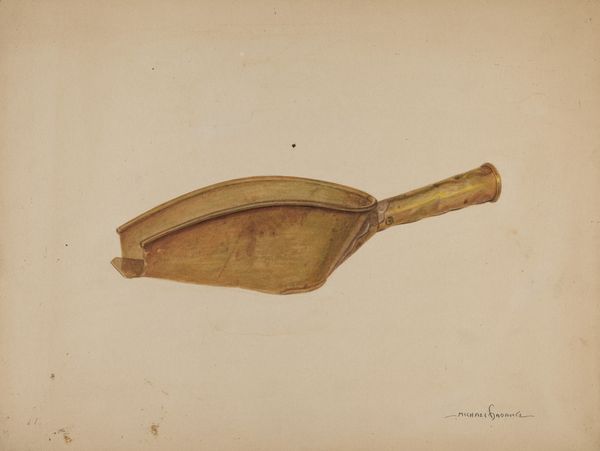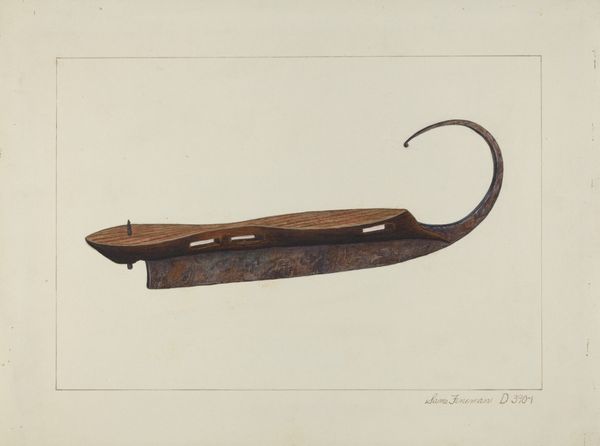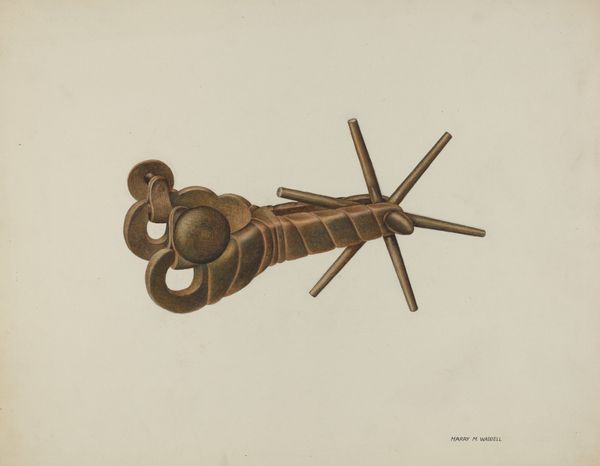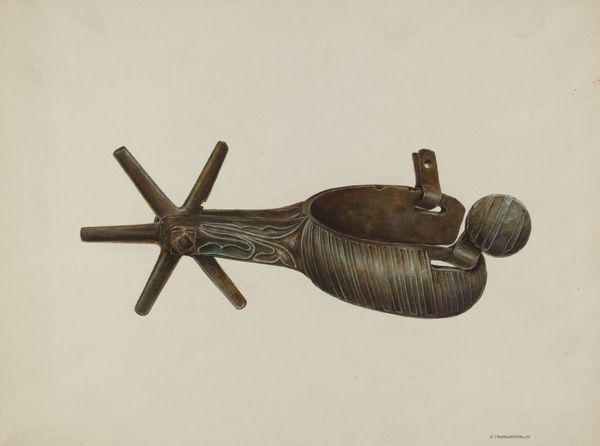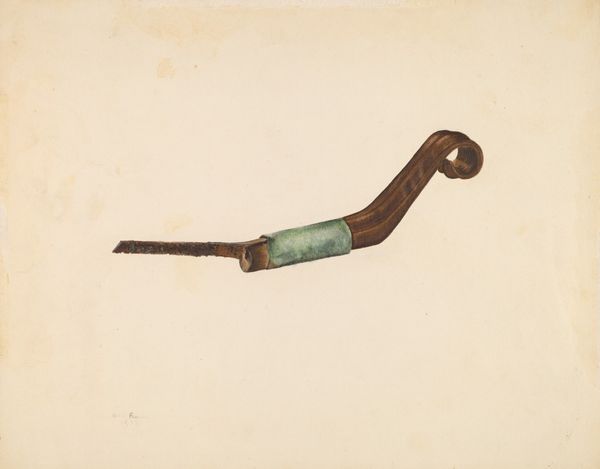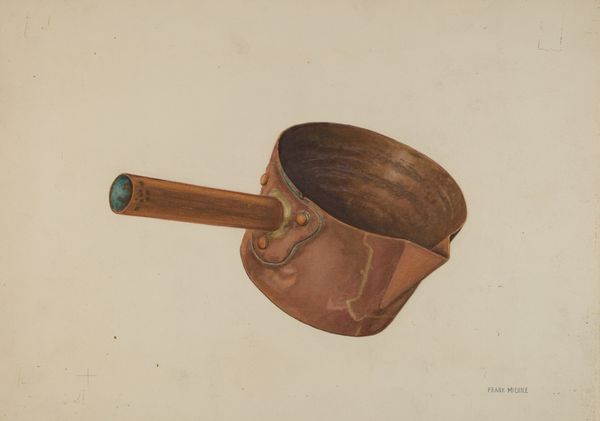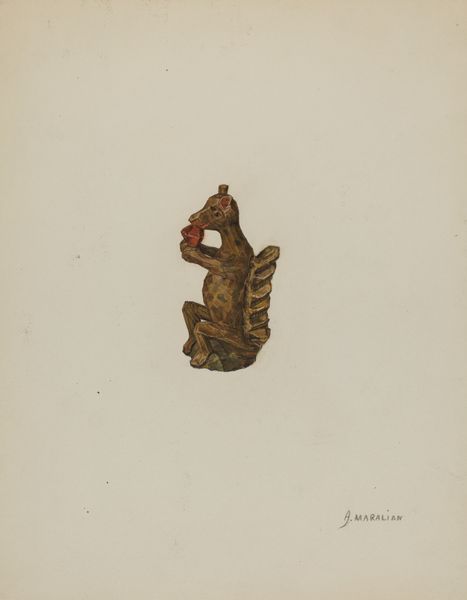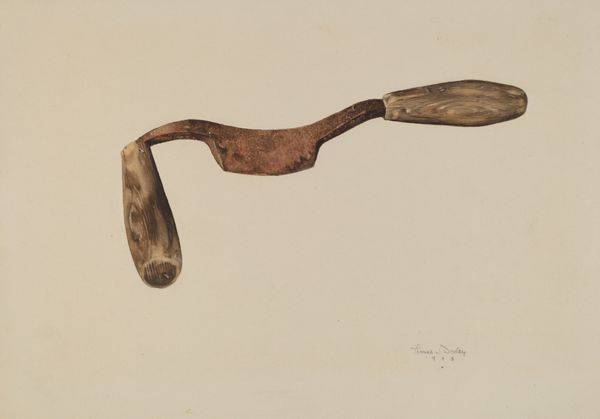
drawing, paper, pencil
#
drawing
#
paper
#
pencil drawing
#
pencil
#
watercolor
#
realism
Dimensions: overall: 23 x 29.1 cm (9 1/16 x 11 7/16 in.) Original IAD Object: length of lock: 9"; circular part of design: 3 1/2"; door plate: 5" high; 1 1/8" wide; depth of lock: 3/4"; Furrel: 1 3/4"; shaft: 2 3/4"; handle: 1 1/2" high; 1 3/4" long; 1" wide
Copyright: National Gallery of Art: CC0 1.0
Curator: Samuel W. Ford created this lovely piece around 1939. It's titled "Lock and Key," rendered with watercolor and pencil on paper. Editor: My first impression is how aged and weathered it looks. The details highlight the ironwork's wear, emphasizing its material reality as something functional yet almost obsolete. Curator: Absolutely. Consider the social context, too. During the late 1930s, issues of security and privacy took on greater urgency given both The Great Depression, but the impending Second World War. Domestic space becomes crucial and deeply gendered, speaking volumes about access and control during a volatile era. Editor: I'm interested in that tension between craft and utility. The lock and key become obsolete together. The process of aging transforms them and the paper through natural processes, from shiny, functional material, to rust and sepia. What do you think this elevation to fine art does to these objects? Curator: I'd argue it asks us to interrogate what’s valued, and by whom. To depict such mundane objects elevates them to something worthy of attention, maybe challenging hierarchical structures, inviting dialogue regarding labor, production, and accessibility. This shifts who gets seen and what narratives become amplified, doesn’t it? Editor: It does. By focusing on the individual components – the bracket, the tumblers, and the levers of the lock–Ford deconstructs an item into parts. Even its rusted texture hints towards age or previous use. These details root it to something beyond mere domesticity. Curator: I also read an element of vulnerability. "Lock and Key" touches upon the concept of forced entry into women’s spaces through visual means and its link to institutionalized sexism prevalent throughout Western history; even to this very day… The symbolic dimensions offer an important lesson. Editor: I agree that the imagery provokes a lot, and while the historical elements cannot be forgotten, the value put into creating this particular item with precision says a lot. I am interested how the artwork embodies transformation from mundane artifact into symbol. Curator: Indeed, by prompting us to explore the symbolism, cultural relevance, and history embedded within everyday objects like the lock and key, hopefully audiences today begin to see the rich textures of our past but consider the deep fractures still apparent in our current culture. Editor: The details on each lock or key are an example of labor as an artform. To value labor is to also value history, even obsolescence can be elevated through artmaking.
Comments
No comments
Be the first to comment and join the conversation on the ultimate creative platform.

